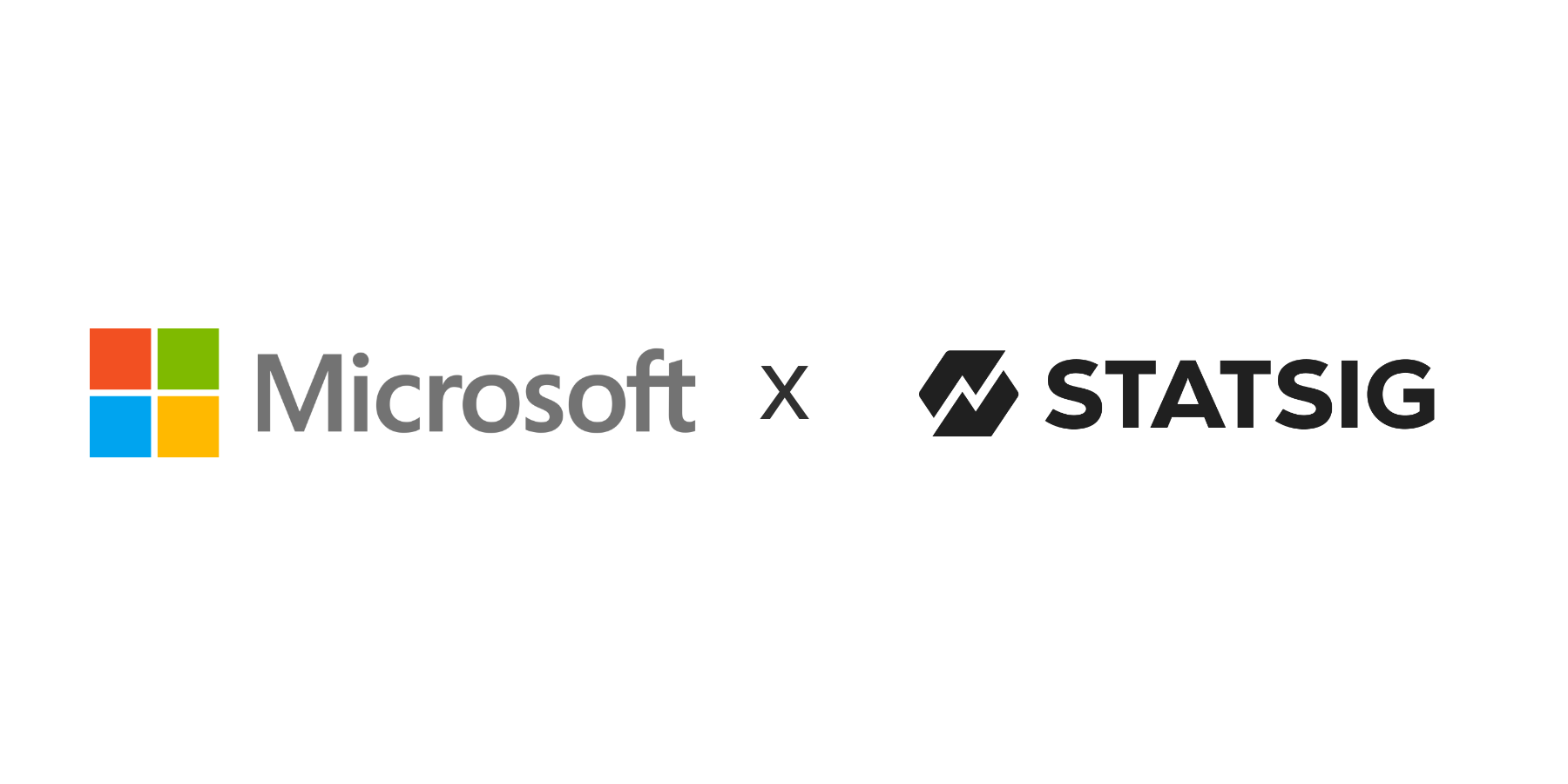Announcing Product Analytics Workload on Microsoft Fabric

With the rise of data warehouses, running product analytics has become more complicated.
Large-scale analytics are more accessible than ever before. But the proliferation of tools has led to competing sources of truth, concerns around security and privacy, and dozens of custom dashboards.
Even worse, data tools rarely integrate smoothly with developer workflows. It becomes difficult to align on the source of truth, and teams spend precious hours maintaining a series of point solutions.
What if there were an easier way? What if your engineering team could use the same source of truth for product analytics that your data team uses for deeper analysis?
The new Statsig solution, which integrates seamlessly with Microsoft Fabric is designed to solve this exact problem.
This integration allows any team using Fabric to run a complete product analytics tool within their existing environment, on their existing data. Product teams get all the benefits of a modern tool, without compromising on security, data residency, or compliance.
Let’s dig in to how this works!
Statsig analytics on Microsoft Fabric
Statsig Product Analytics workload is now fully integrated with Fabric, giving you a comprehensive framework for measuring, monitoring, and optimizing your user experiences—running on data in OneLake and all within your existing Fabric environment.
By running in Fabric, you can:
Connect to your data in Fabric in just a few clicks and seamlessly bring your customer events or usage metrics into Statsig.
Set up metrics such as retention, feature adoption, or engagement, and quickly track them without lengthy manual instrumentation.
Build analytics workflows—like segmentation, dashboards, and funnels—directly on top of your Fabric data.
Maintain rigorous security and privacy compliance, because all analysis runs within the Fabric environment you already trust.
Best of all, every team using Fabric now has immediate access to powerful product analytics—no external tools or complicated data pipelines required.
How Statsig for Microsoft Fabric works
Statsig has already helped thousands of companies measure product performance, run A/B tests, and roll out new features safely. Now, these capabilities are available to any Fabric user via a lightweight integration that ties directly into your existing data warehouse.
1. A single pane of glass for your analytics
Once you’ve added the Statsig integration within Fabric, you can point Statsig to the relevant table(s) or data streams you’d like to analyze. You get a clean, centralized interface to view all the product data that’s already sitting in your Fabric environment.
2. Advanced queries (no SQL required)
After connecting your data source, you can run queries on the metrics and dimensions you care about most - from basic group-bys and drilldowns to funnels, and more.
3. Automatic data collection and metric creation
With proper setup, Statsig’s SDKs can write directly to the tables in your data warehouse - giving you a powerful service to log exposures and events directly into your source of truth.
Your next step in advanced analytics
With Statsig Product Analytics for Fabric, you can start where you are—simply connect your data, define key metrics, and begin uncovering insights. From there, you can expand into advanced use cases:
Define more complex funnels or retention metrics to see how users flow through your product.
Segment users by various attributes to identify who benefits most from specific features.
Experimentation with new designs or features in a controlled, data-driven manner, letting you iterate and improve quickly.
It’s an incremental path to analytics maturity, with all the power you need to keep innovating and scaling.
Closing thoughts
At Statsig, we’re thrilled to collaborate with Microsoft and announce the Public Preview of our product analytics solution that is fully integrated with Fabric and runs on top of your data in OneLake thereby removing the friction and need to use external tools and data pipelines for data ingestion and preparation giving every Fabric user the ability to invest in understanding and improving their products faster.
If you’re ready to get started, head over here to learn more.
Happy Analyzing!
Request a demo


